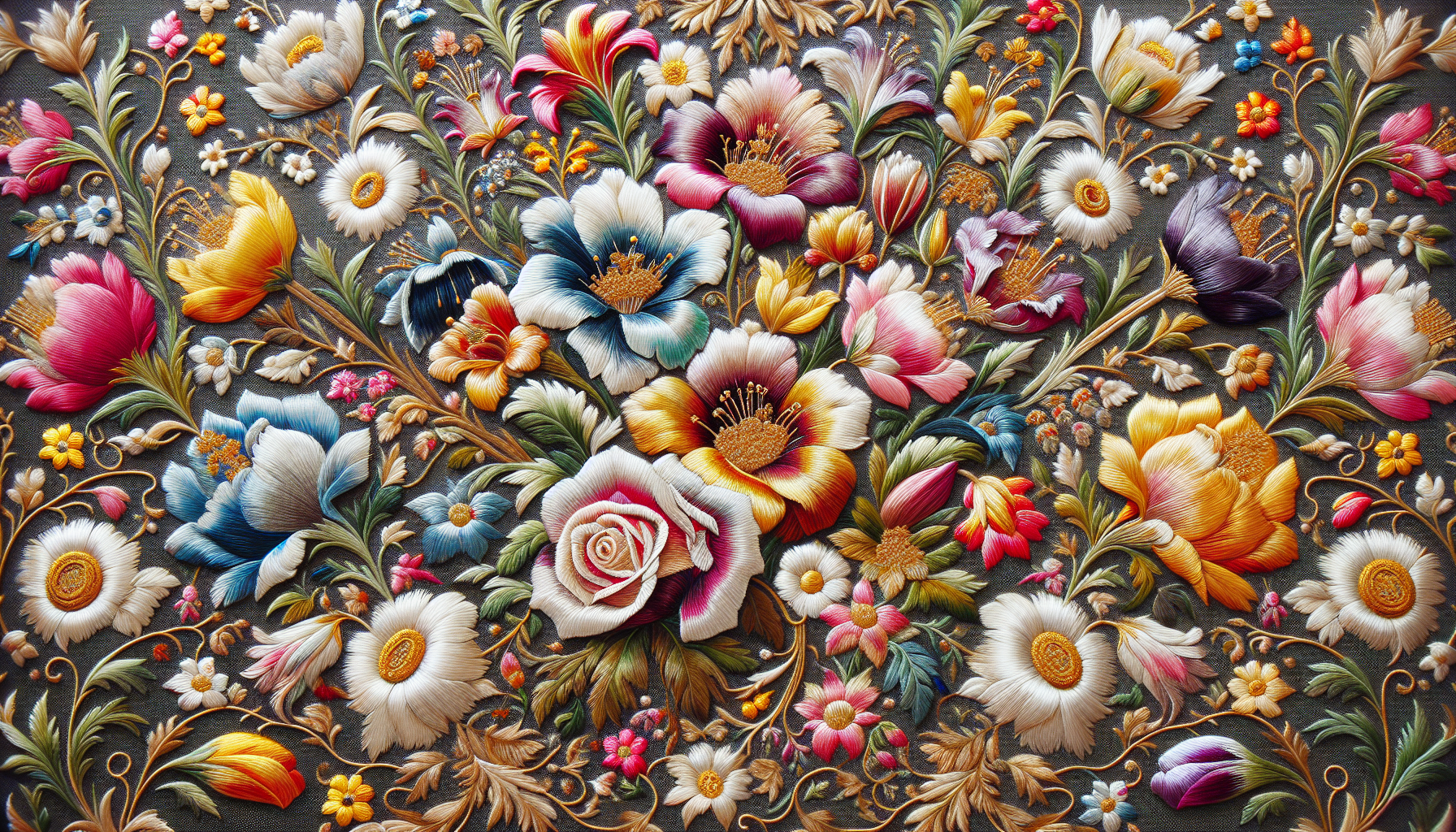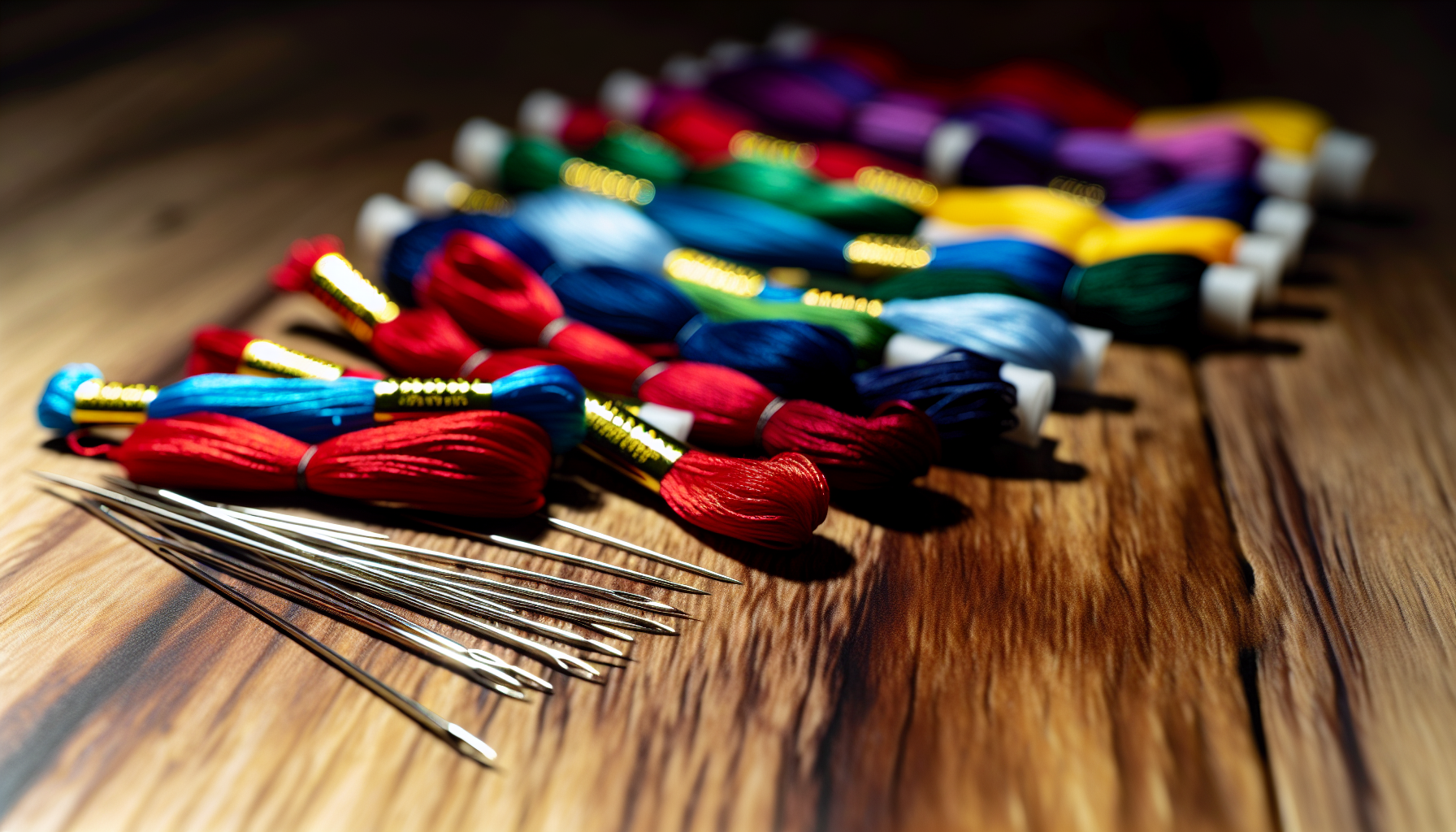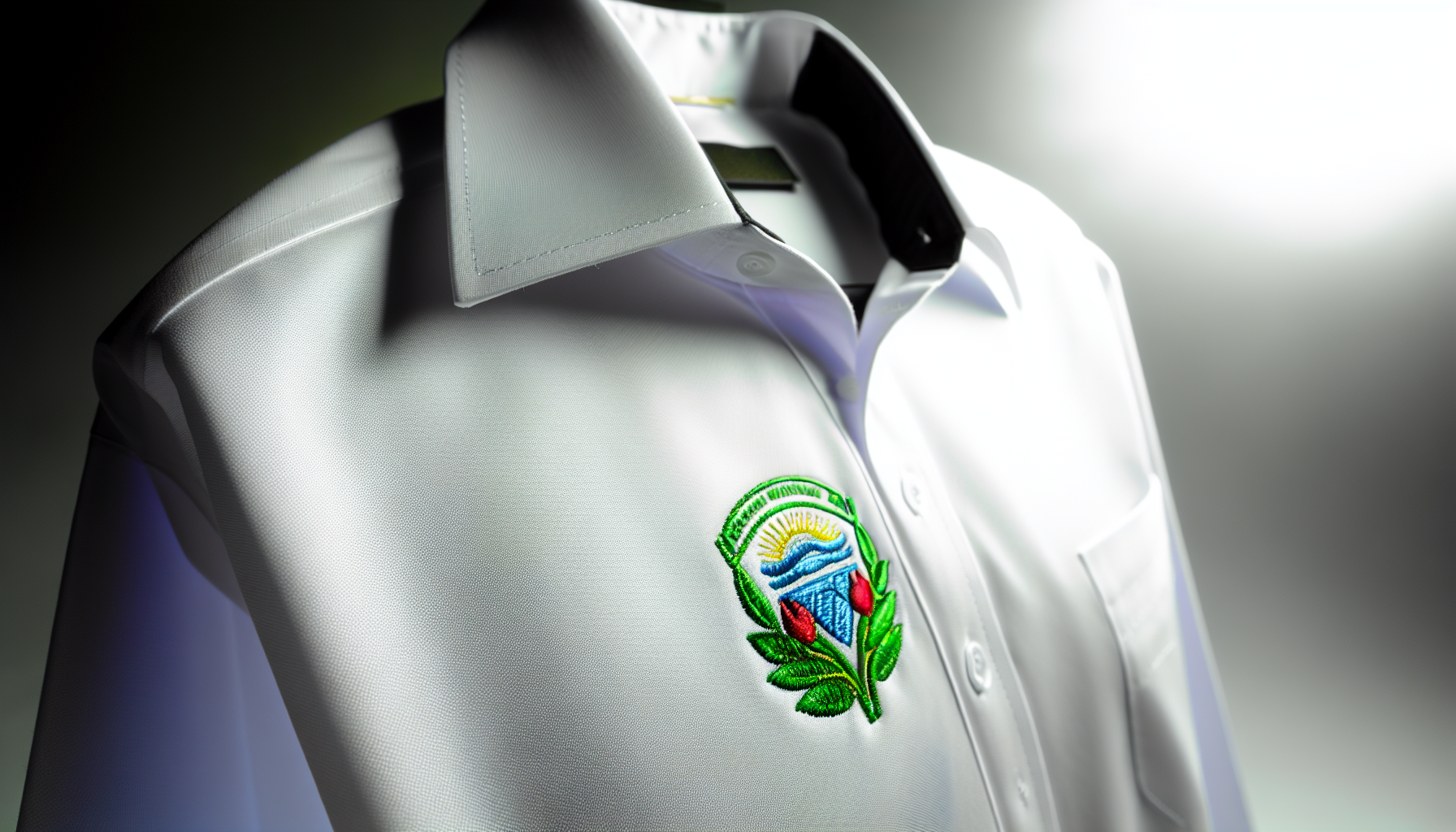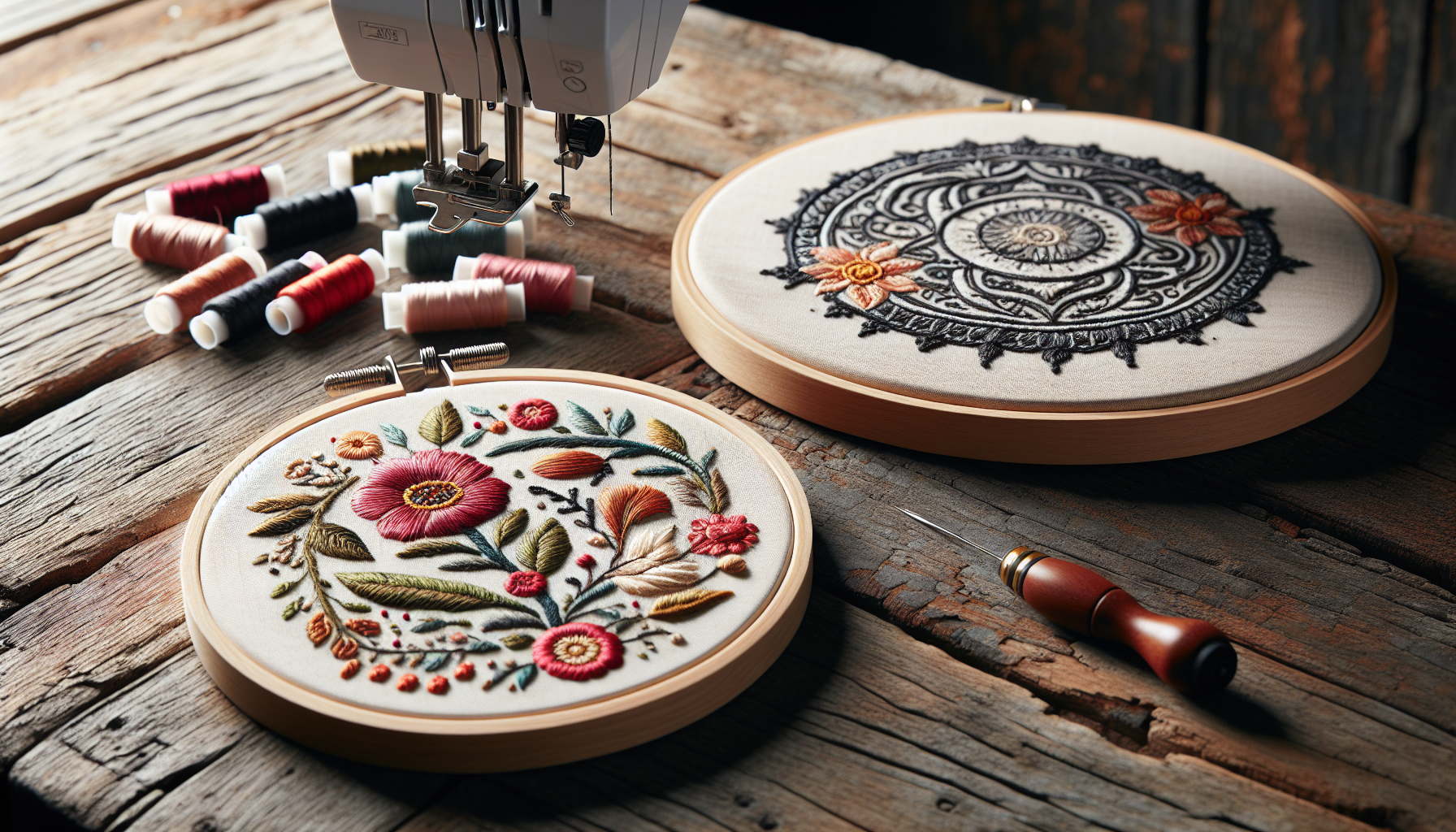Exploring the Art of Thread: What Is Embroidery
What is embroidery? In its essence, embroidery is the art of using needle and thread to embellish fabric with patterns or pictures. It blends creativity with technique, enduring through time as both a practical skill and a form of artistic expression. This guide unpacks the threads of embroidery, from basic stitches to its impact on fashion and home decor, equipping you with the knowledge to appreciate or even start your own embroidery projects.
Key Takeaways
-
Embroidery, a craft with ancient origins, is the art of embellishing fabric using various techniques, materials, and stitches, reflecting cultural stylistic differences throughout history.
-
Embroidery materials—ranging from different fabrics, needles, and threads—together with the foundational techniques, like satin stitch and cross-stitch, are crucial for creating unique and lasting textile art.
-
Practical applications of embroidery extend to fashion and home decor personalization, corporate branding, and therapeutic benefits, providing both aesthetic enhancements and functional uses.
The Essence of Embroidery: A Time-Honored Craft

Embroidery, the art of embellishing fabric with needle and thread, has been a vibrant part of human culture for thousands of years. With roots in ancient China and the Near East, embroidery has adorned the garments and boots of people across continents and epochs, evolving from simple hand-stitched designs to a diverse art form that encompasses numerous techniques and styles. From the Cro-Magnon days to the Middle Ages, and from the Islamic world to the Bayeux Tapestry, embroidery has been a canvas for human creativity, reflecting the unique stylistic differences across cultures and time periods.
The beauty of embroidery lies in its versatility. Whether it’s a satin stitch, a chain stitch, or a running stitch, each technique adds a unique texture and depth to the fabric. Embroidery extends beyond simply enhancing garments; it serves as an artistic medium that enables the embroiderer to imprint their unique signature onto fabric, resulting in a masterpiece as distinctive as their fingerprint.
Defining Embroidery
The term embroidery, rooted in the French word ‘broderie’ synonymous with embellishment, transcends the boundaries of a simple craft to become a language expressed through needle and thread. Unlike knitting or crochet, which involve loops of yarn and distinct tools, embroidery is predominantly executed by hand using a needle to stitch the decoration onto the material. Various fundamental methods of embroidery, like Backstitch, Running Stitch, and Satin Stitch, each add their unique touch to the fabric, creating a symphony of threads that tells a story.
Different types of embroidery, including:
-
Surface embroidery
-
Goldwork
-
Crewel
-
Cross-stitch
Artists employ unique techniques and materials, as well as basic techniques, leading to distinctive characteristics that define each piece. In their creative process, they may also explore the use of other materials.
From Ancient Threads to Modern Days
The art of embroidery has threaded its way through the fabric of human history, from the earliest embroidery of the ancient Chinese using back stitches on silk garments to the embroidery machines of the Industrial Revolution. Ancient civilizations embroidered clothing and textiles to depict significant life events, tell tales of heroic deeds, or simply to add beauty to everyday items.
Many of these ancient stitches, including the back stitch and split stitch, are still used in modern embroidery, a testament to the lasting impact of these age-old techniques as stitches remain relevant today.
The Anatomy of Embroidery: Materials and Tools

As with all art forms, embroidery necessitates suitable materials and tools to manifest the artist’s envisioned masterpiece. The choice of fabric, the type of needle, and the selection of threads or yarns can significantly influence the outcome of an embroidery project. With an array of fabrics like cotton, linen, or wool, a variety of needles like crewel or tapestry, and a spectrum of threads from silk to polyester, embroidery offers a canvas of possibilities, each combination giving rise to a unique piece of artwork.
Fabrics and Foundations
Selecting the right fabric is an essential aspect of the embroidery process, as it serves as the canvas for the threads to form their intricate designs. Whether it’s cotton for its simplicity, linen for its luxury, or felt for its flexibility, each fabric lends a unique texture and feel to the embroidery.
The foundation of embroidery is just as important, providing a base on which to build the stitches. From the satin stitch, which requires a fabric with a full weave to allow for the smooth, lustrous surface it creates, to surface embroidery that can be done on almost any fabric, the choice of fabric and foundation lays the groundwork for a successful embroidery project. The satin stitch in particular is a versatile and popular embroidery stitch that results in a smooth, satin-like finish, ideal for filling in areas with a luxurious texture.
Needles and Knots
In the hands of the embroiderer, the needle becomes a paintbrush, with its type and size dictating the resulting strokes and stitches on the fabric. From crewel needles ideal for wool or thicker threads to tapestry needles perfect for cross-stitch or needlepoint, each needle has unique characteristics that can influence the finesse of the embroidery. Canvas work, as a specific type of embroidery, also requires the right needle choice for optimal results.
Similarly, the knots used in embroidery, like the French Knot or the Colonial Knot, add texture and dimension to the design, creating a tactile experience that goes beyond the visual.
Threads and Yarns
Threads and yarns in embroidery are the mediums through which color and texture are created on the fabric. Each type, from the vibrant 6-strand embroidery floss to the lustrous metallic threads, introduces a unique dimension and visual effect to the design. Beyond their visual impact, threads and yarns also contribute significantly to the durability and longevity of the created embroidery, making the right selection of threads a crucial aspect of the embroidery process.
Embroidery in Fashion and Home Decor

Embroidery has come a long way from its origins in ancient clothing and textiles. Today, it finds application in a wide range of areas, from fashion to home décor. In fashion, embroidery adds a touch of elegance and intricacy to garments, transforming regular clothing into works of art.
Similarly, in home décor, embroidered textiles add a touch of sophistication, transforming ordinary fabrics into extraordinary pieces of décor.
Personalizing Garments
From dresses and tops to swimsuits and bags, embroidery offers endless possibilities to personalize and elevate clothing. Whether it’s a floral pattern adorning a summer dress or a geometric design adding an edgy touch to a denim jacket, embroidery allows individuals to express their personal style and creativity in a unique way.
Customizing clothing with embroidery not only imparts a personal touch to your wardrobe, but it also bestows a unique identity upon the garments, making each piece genuinely distinct.
Accentuating Home Textiles
Just as embroidery can transform clothing, it can also turn ordinary home textiles into decorated works of art. Some examples of home textiles enhanced by embroidery include:
-
Decorated curtains
-
Embellished tablecloths
-
Ornate pillowcases
-
Adorned bedspreads
These pieces, decorated with intricate designs and patterns, including floral motifs, not only serve a functional purpose but also add a touch of elegance and charm to your home décor. They elevate the aesthetic appeal of any space, making it feel more personal and inviting.
The Benefits of Embroidery: Beyond Aesthetics
Beyond its aesthetic appeal, embroidery offers a host of benefits. Practicing embroidery can enhance mental and physical well-being, improve hand-eye coordination, and develop fine motor skills. Additionally, embroidery contributes to the durability of textiles, making them more resilient and longer-lasting.
It is also an eco-friendly practice that supports sustainability in the fashion industry by utilizing eco-friendly materials and repurposing clothing, including work wear. Furthermore, embroidery presents diverse branding options, allowing for the customization of corporate apparel and promotional textiles with company logos and designs, thus enhancing brand identity and recognition.
Practical Perks
Among the practical advantages of embroidery are:
-
Its enduring nature, as it can outlive the garment it adorns
-
Its suitability for work attire and frequently washed clothing
-
Its versatility, allowing for limitless design possibilities
-
Its ability to personalize clothing and create unique pieces
Embroidery also offers the potential for creating custom designs, adding a personal touch to any item.
Emotional and Creative Rewards
Embroidery isn’t just an art form; it’s a therapeutic practice that can help reduce stress, enhance mood, and promote relaxation. The process of creating hand embroidery designs can be a meditative practice, allowing individuals to express themselves creatively while achieving a sense of calm and focus.
Moreover, the completion of an embroidery project provides a sense of accomplishment and can boost self-esteem and confidence.
Embroidery for Branding and Customization

Embroidery has a significant role in corporate branding and customization. Whether it’s adding a company logo to an employee’s uniform or using embroidered merchandise for promotional purposes, embroidery can help establish a strong brand identity and enhance the professional image of a business.
Moreover, embroidery facilitates the customization of a wide range of products, offering businesses the opportunity to personalize their products with unique designs and logos.
Logos and Corporate Identity
Embroidery effectively displays logos and corporate identities. Adorning uniforms, promotional items, or corporate gifts with embroidered logos lends a professional and sophisticated aura, thereby enhancing brand image and increasing visibility. Companies such as LogoUp, EmbroidMe, and Stitch America have successfully utilized logo embroidery to enhance their brand image and boost visibility.
When designing logos for embroidery, it’s important to consider factors like brand consistency, design size, and the use of colours to ensure clarity and impact, as well as exploring various branding options.
Personalized Gifts and Keepsakes
Embroidery can transform ordinary items into personalized gifts and keepsakes. Whether it’s a monogrammed towel, a custom embroidered bag, or a hand-stitched cushion cover, embroidered gifts are a thoughtful and unique way to show someone you care.
With a variety of embroidery and screen printing techniques and design tools at your disposal, you can create custom designs that reflect the recipient’s style and personality.
Advanced Embroidery: Machine vs. Hand

The decision between machine and hand embroidery largely hinges on the project’s scale and complexity. While machine embroidery is efficient and precise, making it ideal for large-scale projects and intricate designs, hand embroidery offers a unique charm and personal touch that is perfect for smaller, more personal projects.
Embracing Technology: The Embroidery Machine
Machine embroidery technology has evolved significantly over time. From the multi-head automatic embroidery machines introduced by Tajima in 1964 to the advanced computerized machines available today, machine embroidery offers rapidity, accuracy, and the ability to accommodate a diverse range of designs.
Despite its efficiency, machine embroidery also has its limitations, including the inability to reproduce intricate details and the potential for stitches to come loose.
The Handcrafted Touch
Hand embroidery, on the other hand, provides a level of control and creativity that can’t be replicated by machines. Each stitch is placed by hand, making the process more time-consuming but also more rewarding.
Hand embroidery showcases softer threads and exhibits a unique handmade appearance that is often preferred for personal and smaller projects that prioritize the handcrafted aesthetic over the consistent appearance of machine embroidery. Hand embroidery today continues to be a popular choice for those who appreciate its intricate and personalized touch.
Caring for Your Embroidered Items
To preserve the longevity and beauty of your embroidered items, proper care and maintenance are paramount. From cleaning and drying to ironing and storing, each step plays a role in maintaining the vibrant colours and intricate designs of your embroidered items.
Cleaning and Maintenance
The cleaning process for embroidered items necessitates a gentle approach and appropriate techniques. Whether it’s hand-washing with a mild detergent or machine-washing on a delicate cycle, it’s important to ensure thorough cleaning without damaging the embroidery.
Ironing embroidered items should be done with caution, avoiding direct contact with the embroidery to prevent damage to the design.
Storage Solutions
Storing embroidered items correctly can help avoid damage and maintain their intricate designs. Whether it’s hanging them up on a pegboard, storing them in embroidery thread boxes, or lining shelves with acid-free paper, each method ensures the preservation of your embroidered items during storage.
For embroidered dress shirts, avoid folding the embroidered area and store them on padded hangers or laid flat to maintain their shape and design.
Summary
Embroidery is an art form that threads its way through time, from ancient civilizations to modern-day fashion and home decor. Its versatility and adaptability are reflected in the diverse techniques and materials used, the countless applications in fashion and home decor, and its use in corporate branding and personal customization. Beyond its aesthetic appeal, embroidery offers a host of benefits, including enhanced mental and physical well-being, increased durability of textiles, and a contribution to sustainability in the fashion industry. Whether you choose machine embroidery for its efficiency and precision or hand embroidery for its unique charm and personal touch, caring for your embroidered items properly can ensure their longevity and maintain their beauty. So why not explore the world of embroidery and stitch your own story onto the canvas of fabric?


Leave a comment